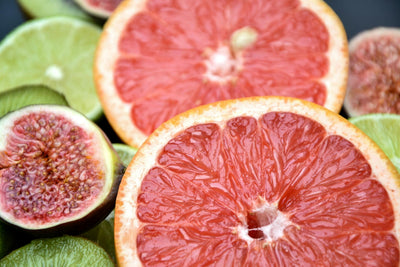Extending the Fridge Lifespan of Bell Peppers
Proper storage of bell peppers can significantly extend their freshness, allowing you to enjoy their crisp texture and vibrant flavor for longer periods. Knowing how to effectively preserve bell peppers in your refrigerator can help you say goodbye to wasted veggies and say hello to a more sustainable kitchen practice.
Importance of Proper Storage
Storing bell peppers correctly in the fridge isn't just about prolonging their life; it's about maintaining their nutritional value and taste. The right storage can prevent spoilage, reduce food waste, and save you money. Bell peppers are rich in vitamins and antioxidants, and proper storage ensures these benefits are not lost over time. For more insights on preventing food waste, explore our article on say goodbye to food waste prolonging leftovers in the fridge.
Factors Affecting Bell Pepper Freshness
Several factors play a role in how long bell peppers last in your refrigerator:
- Temperature: Bell peppers thrive in cool, but not cold, temperatures. The ideal fridge temperature for storing bell peppers is between 40°F and 45°F (4°C and 7°C). Excessive cold can cause them to soften and deteriorate more quickly.
- Humidity: Bell peppers require moderate humidity levels. Most modern refrigerators have humidity control in their crisper drawers, allowing you to adjust the environment to suit these vegetables.
- Airflow: Proper airflow in and around the vegetable compartment can prevent the buildup of ethylene gas, which accelerates ripening and spoilage.
- Storage method: Using breathable produce bags or paper towels to absorb excess moisture can help keep bell peppers dry and prevent mold growth.
| Factor | Ideal Condition |
|---|---|
| Temperature | 40°F - 45°F (4°C - 7°C) |
| Humidity | Moderate |
| Airflow | Adequate |
| Storage Method | Breathable produce bags or paper towels |
Understanding these factors can help you create the optimal conditions for extending the freshness of bell peppers in your fridge. Whether you're a food enthusiast or simply looking to enhance your kitchen efficiency, mastering the art of vegetable storage is a game changer. Discover more about refrigerator features that could transform your food preservation strategies in our article about the culinary edge experiencing the 48 inch french door fridge.
Selecting Bell Peppers
Selecting the right bell peppers is the first step in ensuring they last as long as possible in your fridge. Understanding how to choose the freshest bell peppers and how to avoid those that are past their prime will help you say goodbye to wasted veggies and make the most of the fridge lifespan of bell peppers.
Choosing Fresh Bell Peppers
When you're at the market or store, look for bell peppers that have a vibrant color, whether they are green, red, yellow, or orange. The skin should be taut and glossy without any wrinkles, soft spots, or blemishes. Fresh peppers will feel heavy for their size, an indication that they are well-hydrated and crisp.
Give the bell pepper a gentle squeeze – it should feel firm, and the skin should not yield to pressure. The stem should be green and fresh-looking, not dried out or brown. Be sure to check around the stem for any signs of decay, as this is often where spoilage starts.
By selecting fresh bell peppers, you can extend their shelf life in your fridge and ensure that they will be delicious and nutritious when you're ready to use them. For more on prolonging the freshness of your produce, consider reading say goodbye to food waste prolonging leftovers in the fridge.
Avoiding Bell Peppers That Are Past Their Prime
Steer clear of bell peppers that exhibit any signs of aging or spoilage. Wrinkled, shriveled skin indicates dehydration and age. Soft spots or areas of discoloration can signal the beginning stages of rot, and a hollow sound when tapped could mean the inside has started to decay.
If the stem is dark and brittle or if the pepper has an off smell, it's best to avoid purchasing it as these are signs that the bell pepper is past its prime. Also, be wary of any bell peppers that feel light for their size, as this may indicate a lack of moisture content and freshness.
Selecting bell peppers that are fresh and avoiding those that are not will set you up for success, ensuring that the bell peppers you bring home will last longer in your fridge. Remember, proper selection is just the first step; proper storage is also critical to maximize the lifespan of your bell peppers. If you're looking for the perfect fridge to store your fresh produce, explore the culinary edge experiencing the 48 inch french door fridge for ample space and optimal freshness.
Storing Bell Peppers in the Fridge
Proper storage of bell peppers in the refrigerator can significantly extend their lifespan, ensuring that you can say goodbye to wasted veggies. By understanding the optimal conditions for preserving bell peppers, you can maintain their freshness for a longer period.
Refrigerator Temperature and Humidity
The refrigerator's temperature and humidity levels play a crucial role in preserving the freshness of bell peppers. The ideal temperature range for storing bell peppers is between 40°F to 45°F (4°C to 7°C), which helps slow down the ripening process and prevent spoilage.
| Temperature Range | Effectiveness |
|---|---|
| 40°F - 45°F | Optimal |
| Below 40°F | Too cold; may damage texture |
| Above 45°F | Too warm; accelerates spoilage |
Additionally, maintaining the correct humidity level in the vegetable drawer is important. Bell peppers thrive in a high-humidity environment, which helps keep them crisp and juicy. Most modern refrigerators come with adjustable humidity drawers, allowing you to set the perfect environment for your bell peppers. For more on refrigerator settings, see mastering the perfect chill: what temperature should your fridge be.
Best Practices for Storing Bell Peppers
To maximize the lifespan of bell peppers in your refrigerator, follow these best practices:
- Wash Before Storing: Refrain from washing bell peppers before refrigerating, as excess moisture can lead to mold growth. Wash them only before use.
- Use Produce Bags: Store bell peppers in produce bags or airtight containers to retain their moisture and prevent them from drying out.
- Ventilation: Ensure that the bags or containers have some ventilation to allow airflow and prevent condensation.
- Avoid Ethylene Producers: Keep bell peppers away from fruits and vegetables that produce ethylene gas, such as bananas and tomatoes, which can speed up ripening.
- Separate from Strong Odors: Bell peppers can absorb strong odors, so store them away from foods with powerful scents.
By implementing these storage techniques, you can extend the fridge lifespan of bell peppers and make the most of your produce. Don't forget to periodically check your peppers for signs of spoilage and use them before they go bad. For additional tips on prolonging the life of your produce, visit our article on say goodbye to food waste: prolonging leftovers in the fridge.
Signs of Spoilage
Properly storing bell peppers in the fridge is essential to extend their freshness, but it's equally important to recognize when they're no longer suitable for consumption. Understanding the signs of spoilage can help you determine when to discard bell peppers, ensuring the safety and enjoyment of your meals.
Identifying Spoiled Bell Peppers
Bell peppers are vibrant and firm when fresh, but several changes can indicate spoilage:
- Texture: Fresh bell peppers have a crisp texture. If they become soft or wrinkled, they're starting to spoil.
- Color: Any discoloration or the appearance of dark spots can signal that the bell pepper is past its prime.
- Smell: An off or sour odor is a clear sign that the bell pepper should not be consumed.
- Mold: The presence of mold, which may appear as fuzzy spots in various colors, is an unmistakable indication of spoilage.
These signs of spoilage are important in deciding whether to use the bell pepper in your cooking or to discard it. If you're ever unsure, it's best to err on the side of caution and throw it away.
When to Discard Bell Peppers
Here are specific instances when you should dispose of bell peppers:
- Mold Growth: If you spot mold on any part of the bell pepper, it's time to discard it. Mold can penetrate beyond the surface, making it unsafe to eat even if you remove the visible mold.
- Pungent Smell: A bell pepper that emits an unpleasant odor should be thrown out immediately.
- Softness: A bell pepper that has lost its firmness and has become soft throughout is no longer fresh and should not be eaten.
By recognizing these signs, you can say goodbye to food waste by prolonging the life of your bell peppers before they reach the point of spoilage. Additionally, familiarizing yourself with the optimal storage conditions and the right fridge temperature can help you prevent premature spoilage of not only bell peppers but all your perishable goods.
Extending Freshness Beyond the Fridge
While refrigeration is key in keeping bell peppers fresh, sometimes you might need to extend their lifespan even further. Freezing and preserving through pickling or canning are effective methods to prolong the life of your bell peppers, ensuring that you can enjoy their flavor and nutritional benefits for months to come.
Freezing Bell Peppers
Freezing bell peppers is a straightforward way to preserve their freshness. Before freezing, it's essential to wash them thoroughly, remove the stems, seeds, and membranes, and then slice or chop them according to your preference. Blot the pieces dry to remove excess moisture, which can lead to freezer burn. Spread the bell pepper pieces in a single layer on a baking sheet and freeze until solid. Once frozen, you can transfer them to airtight containers or freezer bags.
Bell peppers can be frozen for up to 8 months. Remember, frozen bell peppers are best used in cooked dishes, as they may lose their crisp texture upon thawing.
| Bell Pepper State | Freezer Lifespan |
|---|---|
| Raw, Chopped | 6-8 months |
| Blanched, Chopped | 8-10 months |
For a comprehensive guide on how to safely store veggies in the fridge and freezer, check out our article on say goodbye to food waste prolonging leftovers in the fridge.
Preserving Bell Peppers through Pickling or Canning
Pickling and canning are traditional methods of preserving bell peppers that not only extend their shelf life but also enhance their flavor. To pickle bell peppers, you'll need to prepare a vinegar-based pickling solution and add seasonings like garlic, dill, or mustard seeds to create a flavorful brine. After boiling the bell peppers in the brine, you can transfer them to sterilized jars and seal them tightly.
For canning, you'll need a pressure canner to ensure all bacteria are eliminated, and the bell peppers are safely preserved. Canned bell peppers can last for up to a year when stored in a cool, dark place.
| Preservation Method | Shelf Life |
|---|---|
| Pickled | 1-2 years |
| Canned | Up to 1 year |
Whether you choose freezing, pickling, or canning, these preservation methods allow you to enjoy bell peppers long after their typical fridge lifespan has passed. Plus, having preserved bell peppers on hand can be a time-saver for quick meals and adds a burst of flavor to your dishes.
For more ways to extend the life of your fresh produce and reduce food waste, explore our articles on efficient kitchen storage solutions and choosing the right fridge for your needs.
Cooking with Bell Peppers
Bell peppers, with their crisp texture and sweet flavor, add a burst of color and nutrition to any meal. Whether you're a seasoned chef or a home cook, these versatile vegetables can elevate your culinary creations. Here, you'll find inspiration for delicious bell pepper recipes and creative ways to incorporate them into your meals.
Delicious Bell Pepper Recipes
Bell peppers can be the star of the show or a supporting ingredient in a variety of dishes. Here are some mouthwatering recipe ideas:
- Stuffed Bell Peppers: Fill halved bell peppers with a mixture of ground meat, rice, spices, and cheese, then bake until tender.
- Bell Pepper Stir-Fry: Sauté sliced bell peppers with onions, garlic, and your choice of protein for a quick and healthy meal.
- Roasted Red Pepper Soup: Blend roasted bell peppers with vegetable stock and cream for a rich and comforting soup.
- Bell Pepper Omelet: Enhance your breakfast with diced bell peppers added to fluffy eggs, cheese, and herbs.
For detailed recipes and cooking techniques, be sure to explore our collection of bell pepper dishes.
Creative Ways to Incorporate Bell Peppers in Your Meals
Bell peppers can be integrated into meals in a multitude of ways. Consider these suggestions:
- Salads: Add raw, sliced bell peppers to green salads for a pop of color and crunch.
- Sandwiches and Wraps: Include strips of bell pepper in sandwiches, wraps, or paninis for extra texture and flavor.
- Pizza Toppings: Top your homemade or store-bought pizza with bell pepper slices before baking.
- Pasta: Toss sautéed bell peppers into pasta dishes along with your favorite sauce.
- Snacks: Use bell pepper strips as a vehicle for dips like hummus or ranch dressing.
By incorporating bell peppers into your meals, not only do you enhance the taste, but you also increase the nutritional value of your dishes. Bell peppers are rich in vitamins A and C, fiber, and antioxidants. Make the most of their health benefits and vibrant colors to make every meal visually appealing and nutritionally balanced.
For those aiming to minimize food waste, consider using leftover bell peppers in creative ways, such as making relishes or adding them to quiches and frittatas. For more tips on reducing food waste and prolonging the freshness of your vegetables, visit our guide on how to say goodbye to wasted veggies and prolong the fridge lifespan of bell peppers.
Embrace the versatility of bell peppers and experiment with different recipes and meal ideas. With a little creativity, you can turn this humble vegetable into a delightful addition to your culinary repertoire.
Tips for Minimizing Food Waste
Reducing food waste is not only beneficial for your budget but also for the environment. With proper planning and clever usage of leftovers, you can significantly cut down on the amount of food that gets tossed out. Here are strategies for meal planning and ways to utilize leftover bell peppers effectively.
Meal Planning Strategies
Meal planning is a powerful tool in minimizing food waste. By organizing your meals for the week, you can purchase only what you need, preventing overbuying and subsequent waste.
- Inventory Your Fridge and Pantry: Regularly check what you already have before shopping. This avoids buying duplicates of items that you may already have.
- Plan Around Perishables: Create meal plans that incorporate ingredients like bell peppers early in the week, ensuring they're used while fresh.
- Adapt Recipes to What You Have: If you have bell peppers that need to be used up, adjust recipes to include them or substitute them for other vegetables in your recipes.
- Batch Cooking: Prepare larger quantities of meals that use bell peppers and store them for future consumption. This not only saves time but ensures that all purchased peppers are used.
For more comprehensive strategies on making your groceries last, see our guide to say goodbye to food waste prolonging leftovers in the fridge.
Using Leftover Bell Peppers Wisely
Leftover bell peppers can be repurposed in various ways to extend their usefulness and enjoy their flavor.
- Stir-Fries and Omelets: Leftover bell peppers can be chopped and added to stir-fries or omelets, giving these dishes a fresh flavor and vibrant color.
- Pizzas and Sandwiches: Enhance pizzas or sandwiches with slices of bell peppers for an extra crunch and nutritional boost.
- Homemade Sauces: Create sauces and dips by blending bell peppers with other ingredients, perfect for pasta dishes or as a condiment.
- Preservation: If you have an abundance of bell peppers, consider freezing them for later use or explore pickling and canning for long-term storage.
For more detailed tips on food preservation and making the most out of your fridge space, visit our articles on efficiently utilizing undercounter freezers and mastering the art of refrigeration with the right fridge.
By implementing these meal planning strategies and using leftover bell peppers wisely, you can enjoy the full potential of your produce while minimizing food waste. With a little creativity and planning, every bell pepper can be savored to the last bite.
Get Your Upgrade or New Addition at Fridge.com
Whether you're searching for your perfect fridge, freezer, wine fridge, beer fridge, ice maker, or kegerator, we have what you need.
Shop the world's best brands at Fridge.com.
We also have tons of awesome articles about kitchen stuff and home news. Enhance your home, garage, backyard, patio, and office with the coolest essentials. With every necessary type of residential refrigerator or freezer in our collection, we've got you covered.
Elevate your game and shop now at Fridge.com!






